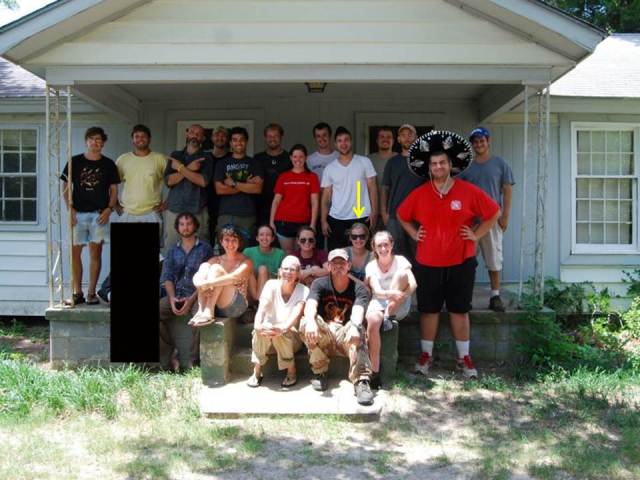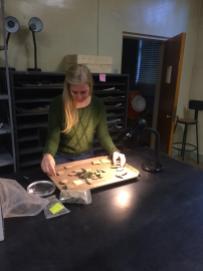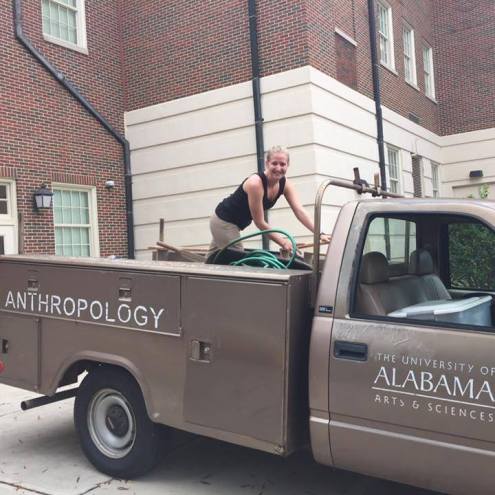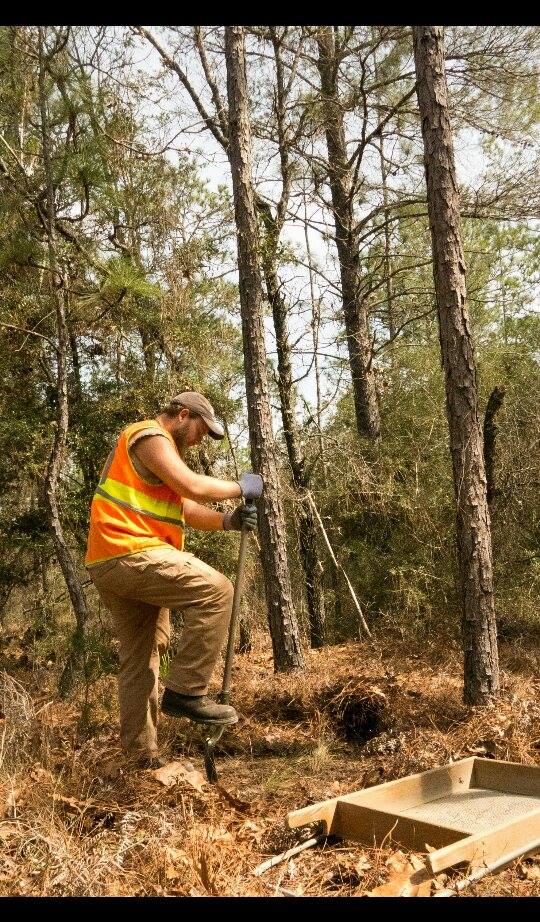In this post we reflect on what we set out to accomplish in the 2017 field season and what we actually accomplished in the 2017 field season. As our colleagues in archaeology know well, excavations sometimes yield what you set out to discover but more often than not produce discoveries that you were not expecting, for better or for worse.
When we broke ground on June 6, our objective was to continue delineating what we thought was a Mississippian structure, likely a house. This feature was encountered in geophysical data and two trenches excavated in 2016. Those data suggested we were looking for a square building, approximately 5 m on a side, with a large central feature or hearth. In the 2016 season, we identified a line of three posts and a daub-and-fire cracked rock feature that seemed to fit those interpretations. So confident were we in these interpretations that Adam Coker, a graduate student from the University of Illinois who has been part of the SMASH project since 2013, was prepared to write his Master’s thesis on the structure.
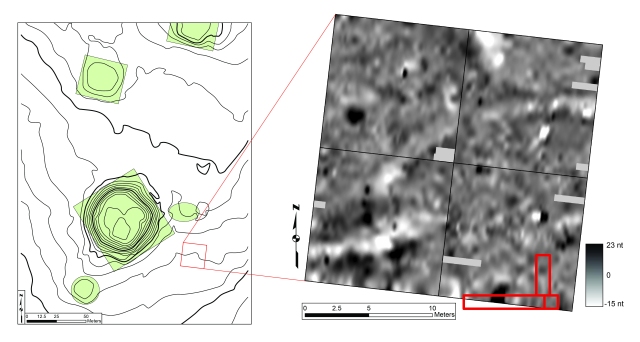
Location of 2016 excavation trenches (heavy red line) and magnetometer data suggesting the presence of a square structure with a central hearth.
Given these objectives, we opened up a block of 2×2 m units that encompassed the northern half of the “structure.” Excavating in the plowzone gave the 2017 field school students the opportunity to hone their skill sets and practice the essentials of creating level layers and straight walls. Once we removed the plowzone, we did not encounter the expected transition between interior and exterior space, despite the fact that we identified a few additional posts along the row encountered in 2016. Furthermore, once the area around the “hearth” was brought down to the level of the feature, there was nothing that suggested it sat on a house floor. In fact, that feature seemed less like a hearth and more like a pile of daub and fired rock that had been thrown out as trash. However, to the east of that feature, we were encountering a rich midden deposit chock-full of ceramics, lithic material, and well-preserved fauna. This excited Kimi Swisher, a graduate student from the University of Michigan who is composing a pre-doctoral paper on the faunal assemblage from Singer-Moye. Previous shovel-tests and excavations meant we were aware of the midden deposit, but we had thought that it was perhaps fill within the former structure’s semi-subterranean basin.
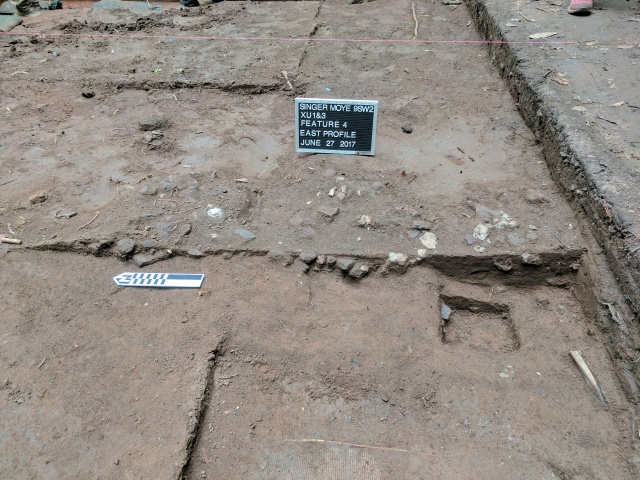
The exposed feature that was not a hearth at all, but instead a deposit of daub and rock. These materials had been exposed to high temperatures, but likely not in situ.
By week 3, we were convinced that the structure we set out to investigate was not a structure, but rather a spectre in our geophysical data that may relate to the line of ephemeral posts encountered at the base of the plowzone. As such, we refocused our efforts on investigating the midden deposit that at this point was producing a wealth of interesting material. The hope was that this deposit would help us understand the activities of people living or operating in the space adjacent to Mounds A and H, an area that we have interpreted as a long-lived, possibly elite, precinct. This interpretation in based in part on the identification of a palisade or screen excavated in 2015-16 which would have separated this part of the site core from the general populace.
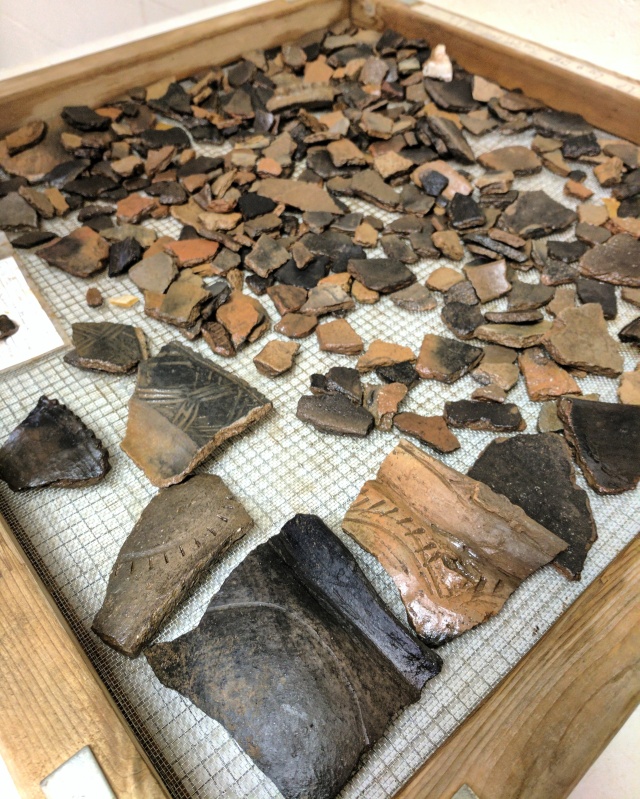
Selected ceramic sherds and vessel fragments from near the base of the midden deposit
A soil core determined that the midden extended some 80 cm below the ground surface. So, with a week left in the season, we focused on the southernmost extent of the identified deposit, within the bounds of the 2016 excavation trench. Nearing the base of the deposit, we encountered a dense lens of finely-made ceramics, charred hickory nut, freshwater and marine shell, fish bone, and large pieces of mammal bone, including a bear vertebra. A fragment of worked shell, provisionally identified as a gorget fragment, provided a hint of specialized craft production. Almost 30L of sediment at the base of this deposit were bagged for flotation in the hopes of identifying additional faunal and botanical material.

Shell gorget fragment

Bear vertabra
While preparing the walls and base of the trench for profile drawing on the last day of excavation, the archaeology powers-that-be did what they are wont to do. We uncovered a very clearly defined wall trench in the strata directly below the midden deposit. This wall trench was 20 cm wide with a rounded end and lay beneath BOTH the presumed hearth feature and the earlier midden deposit. It resembles exactly the types of wall trenches encountered by Don Gordy and Margaret Russell in their excavations beneath Mound H, located some 40 m north of the 2017 excavation block. These are undoubtedly related to the earliest occupation of the site, ca. A.D. 1150-1300. A second feature in the southeast corner of the unit is likely another wall trench.
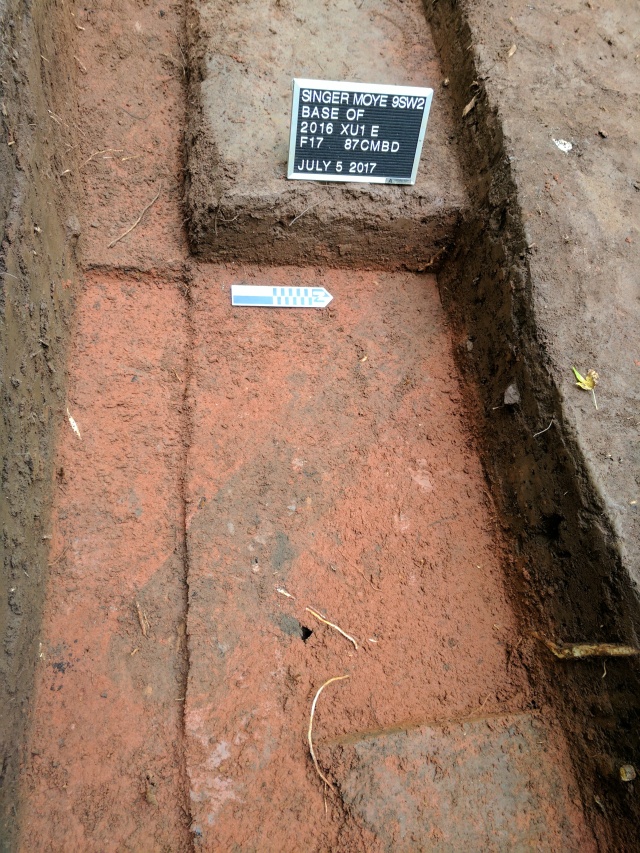
Wall trench below midden deposit
So, what have we learned? 1) That geophysical anomalies must be investigated below ground to ascertain their contents and significance. 2) That a great amount of activity, possibly domestic, but also possibly related to feasting and/or labor-intensive craft production, took place in this area of the site. 3) That this area was home to some of the earliest of occupants of Singer-Moye and remained a focus of activities and monument construction until the site’s eventual abandonment, after A.D. 1400.
What remains to be done? The 2017 field school students: Flynn, Julie, Mara, and Tiffany, are continuing to wash and rough-sort artifacts during this week in the lab. Their enthusiasm and positive attitudes have made this field season thoroughly enjoyable and we are thrilled to add them to the roster of archaeologists who have honed their skills at Singer-Moye. Adam and Kimi will be continuing their analyses and interpretations through the 2017-18 academic year. We are excited to see the results of their work and greatly appreciate their contributions to the project. Our goal is to present the results of this season’s fieldwork and resulting analyses at the 2018 SAA meetings in Washington D.C.
This year’s season draws to a close five years of field schools and field work at Singer-Moye. Stefan first brought a team of UGA students to the site in 2012 to conduct his dissertation research. By our estimates, 52 students have become competent archaeologists under our watch at the site. It’s been an honor and a privilege to work with each of them. We hope that after a few years to digest and publish what we have learned thus far we will be back to learn more about the history and archaeology of Singer-Moye.
– Jennifer Birch and Stefan Brannan
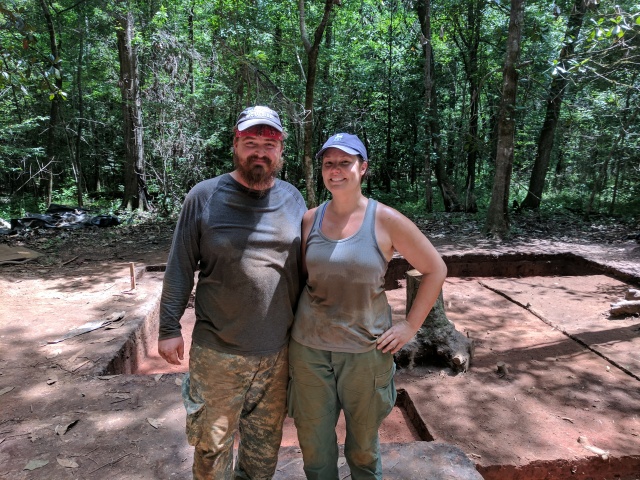










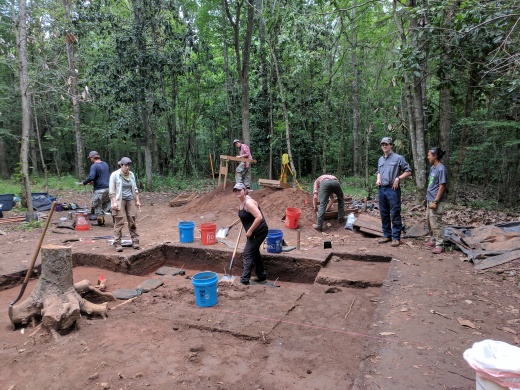
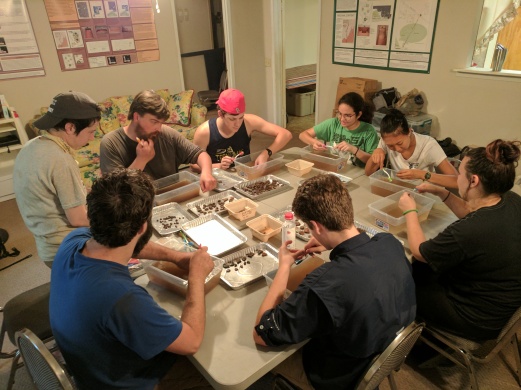


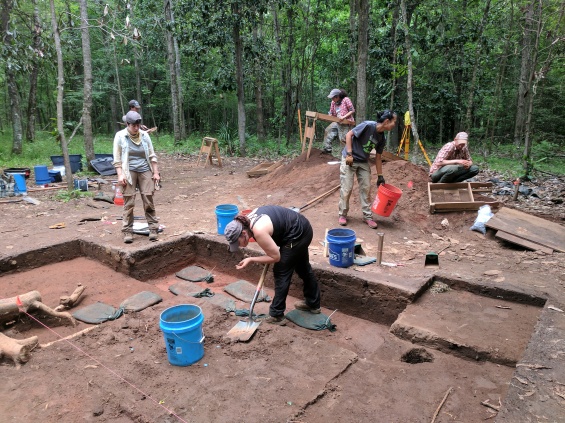

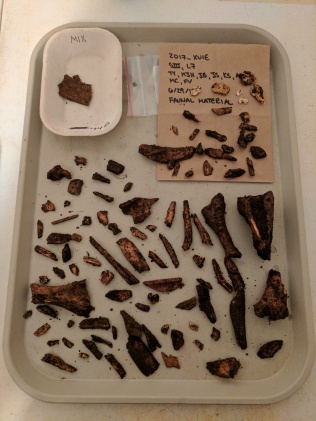
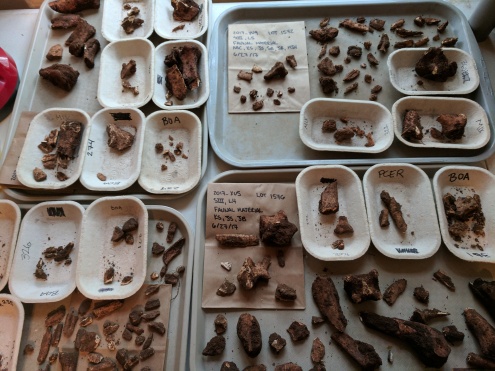
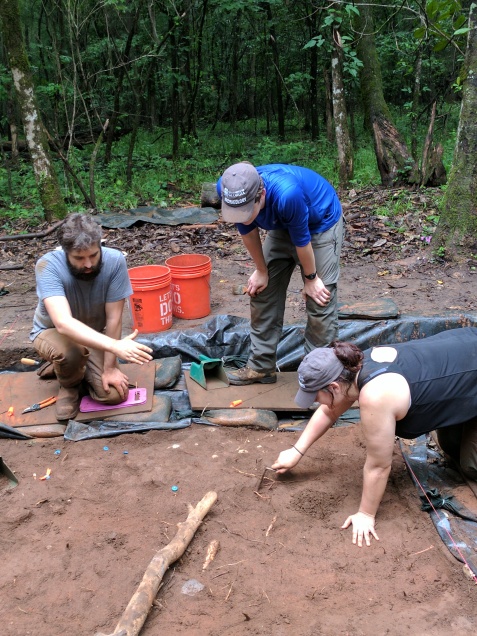









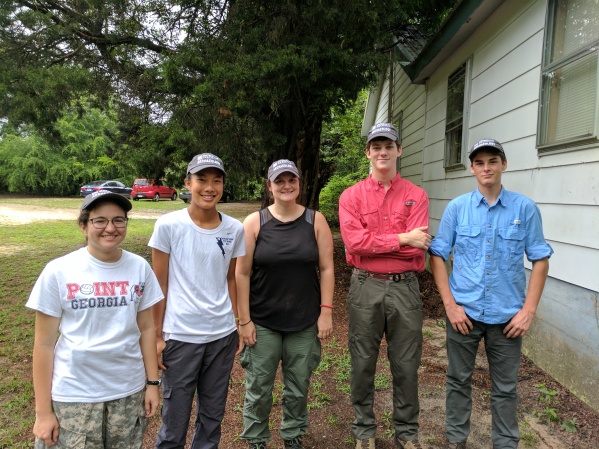


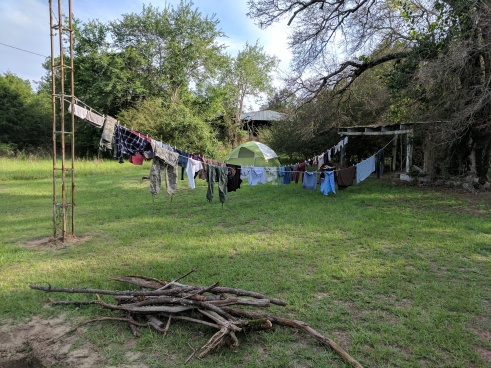
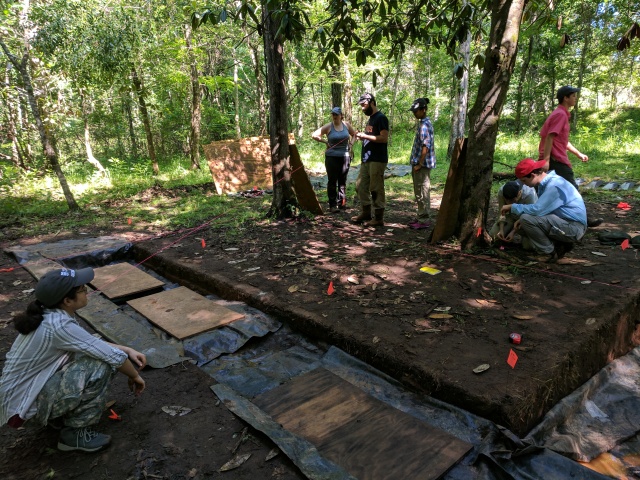
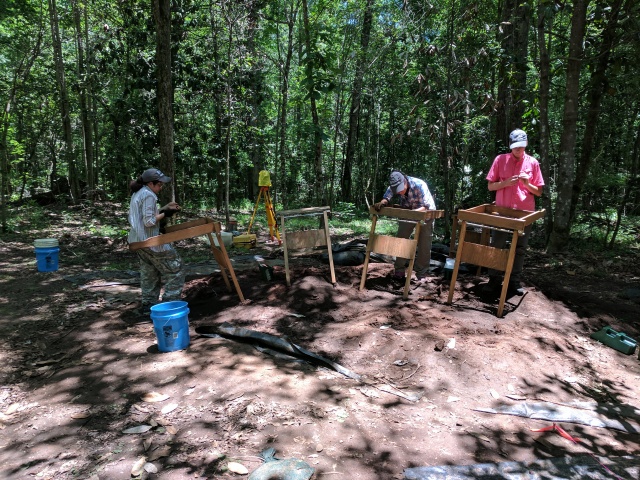
 We still have a few places open for this summer’s field school at Singer-Moye.
We still have a few places open for this summer’s field school at Singer-Moye.